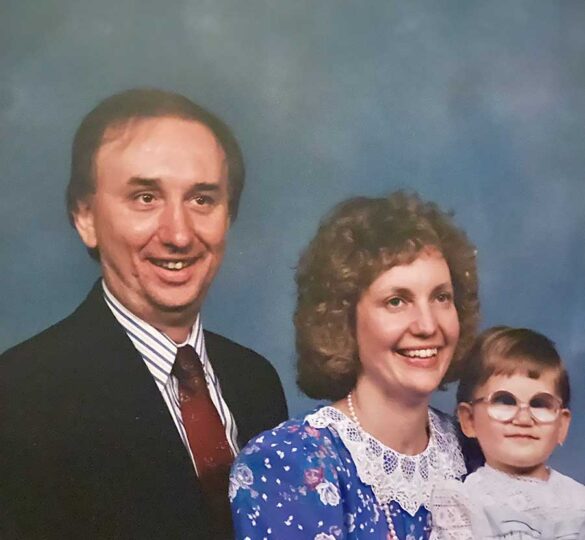Growing Up with Aphakic Glaucoma
Though I wasn’t born with glaucoma, my journey with visual impairment and chronic eye issues began at birth.

I was born with cataracts in both eyes, which required surgery to remove my clouded lenses. Typically, cataract surgery involves not only removal of the natural lens but implantation of a new, artificial lens. However – and though it makes me feel a bit old to say – intraocular lens implants, or IOLs, were not placed in children back in the 1990s. The surgery left me aphakic, meaning missing a lens.
That aphakia placed me at increased risk for developing glaucoma, and at nine years old, I was diagnosed. By that time, I was already attending appointments with a pediatric ophthalmologist yearly at minimum. I had also been patching to strengthen the vision in my weaker eye, along with receiving vision and occupational therapy.
Like many others, my glaucoma treatment began with eye drops. I started with one drop per day, and as time went on, more were added as needed. For reasons unknown, the glaucoma in my left eye has always been more aggressive, requiring multiple different interventions over the years. (My right eye, on the other hand, is thankfully behaving itself with one drop per day.) At age 15, I had an Ahmed valve implanted in my left eye. My eye didn’t respond well to it, rejecting the valve, leading to its eventual removal. I then had a trabeculectomy surgery. Then came another valve, this time a Baerveldt, which my left eye also decided to reject. After this, I had multiple laser procedures, including CPC and ECP.
Throughout my twenties, I had a new laser procedure, MicroPulse, performed three times. While it was helpful short-term, by my early thirties, the intraocular pressure (IOP) in my left eye was still too high despite multiple drops and oral medication. My glaucoma specialist suggested a valve, but I was hesitant – not because of her, but because of my prior experiences as a teenager. Finally, something else had to be done. I had surgery to implant an Ahmed ClearPath (non-valved glaucoma drainage device that reduces IOP) in March 2023. Frankly, I was incredibly nervous, but I had complete faith in my glaucoma specialist, who has never steered me wrong. It’s been just over a year of having the implant, and I am thrilled to say it’s been a success! My pressure is stable, and I’m taking fewer medications.
If you’ve made it this far, you may be thinking to yourself, “well, this all sounds pretty bad.” But by now, at age 32, glaucoma is just another part of my life. I might think differently if I didn’t have all the support that I do, and I consider myself lucky. I have a wonderful husband and a great circle of friends. I graduated with a Master of Social Work ten years ago, and have since earned my clinical license. I work full-time and have found balance between managing chronic illness and being a human. And, even before that, my parents were my first and strongest sources of support. When I was young, I remember my mom telling me: “You are your own best advocate.” She took me to appointments; she ensured that I patched every day; she wasn’t afraid to ask doctors questions.
I’ve tried my best to live out her advice. Now, I’m honored to assist in moderating an online Facebook support group for glaucoma patients, founded by Nia Martin. I’ve also been incredibly excited to collaborate with the Glaucoma Research Foundation, an organization dedicated not only to finding a cure but to empowering patients with knowledge.
What knowledge would I want others to have? Without treatment, glaucoma can lead to irreversible blindness. However, with early detection and treatment, people with glaucoma are able to lead full lives. Keep your yearly eye appointments, and don’t be afraid to ask questions and take an active role in your own treatment. Life goes on with glaucoma, and this life is pretty good so far.

Beata Skonecki, LCSW
Beata is a social worker, patient advocate, and international adoptee living in Western New York. As a glaucoma patient for over 20 years, Beata is honored to collaborate with Glaucoma Research Foundation, an organization committed to patient advocacy and empowerment.